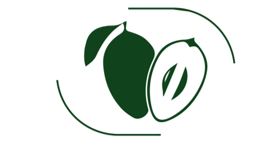Author Guidelines
Articles can be submitted in English or Indonesian. Manuscripts submitted that do not match the Manilkara journal template will be returned to the author for correction. The articles should be an original research findings that are in accordance with the focus and scope of the Journal and has novelty. Journal of Manilkara does not accept articles that have been published or submitted to other journals. If the submitted article consists of several authors, all co-authors will be notified. Every article that is sent will be given a specific number for correspondence purpose. Articles that have been reviewed will be sent to the author with comments and publication decision through the OJS system. Authors must also ensure that the articles have less than 20% similarity score based on Turnitin, PlagScan, or OUoriginal apps. If in the future it is known that the article has been published in another journal, the article will be annulled and the author will be blacklisted. If the article is published in Indonesian, the title and abstract should use 2 (two) languages, namely Indonesian and English.
Articles to be published in the Manilkara Journal follow the writing requirements with the following main structure.
Title (Indonesian-English)
The title must be short, specific, and informative, written in Indonesian and English with a maximum of 20 words. The title is written in capital letters at the top center of the paragraph, Arial font, bold, size 14 pt. Under the title, write the name of the author without a title (12 pt size) and affiliated institution (11 pt size), and be numbered if there is more than one affiliated institution. Correspondence authors are starred and provided with an e-mail address. The correspondent author is the person in charge of the article.
Abstract (Indonesian-English)
Abstract for each article written in Indonesian and English, maximum 300 words. The words "Abstract" and "Abstract" are written in capital letters in the upper middle position of the paragraph, bold, size 12 pt. Paragraphs are written left and right aligned, size 10 pt., without citations. The abstract is written concisely and clearly, which contains the objectives, research methods, results and discussion (including data if it is a quantitative study and the results of statistical analysis), as well as conclusions or important questions found in the research. Choose 3 to 5 "kata kunci" or "keywords" that can help build an alphabetical order of the index. The words "kata kunci" or "keywords" are in bold.
Preliminary
The introduction contains the background or reasons for the scientific work written, references or theories that support the hypothesis, research objectives, and the novelty of the research obtained. The name of the species that appears first must be written in full in accordance with the international naming code. Foreign terms are written in italics.
Research Methods
The research method is written in the form of paragraphs. Tools that are commonly used do not need to be called the brand or model, unless the tool determines the results of the study. The material used is described in detail (eg where it was obtained, strain or clone number, and so on). Tools and materials are described along with writing research procedures. The experimental design and its approach are described in detail. Also describe the statistical method (if any) or data analysis used in detail. If needed, pictures of the data collection locations or sample points can be provided.
Research Results and Discussion
1. Table
Tables are arranged and numbered sequentially according to their occurrence in the text. Each table should be given a brief and clear title that is placed at the top of the table at the top center position, size 10 pt. The contents of the table are written in one space with a size of 10 pt (see Table example). Information or symbols in the table (if any) are placed at the bottom of the table with one space and a font size of 10 pt. Attach the table in a separate file. Each table displayed must be cited in the text.
Example table:
2. Picture
The displayed image must be in good quality and resolution. Images or illustrations taken from other sources must be referenced. Images must be numbered in the order they appear in the text. Each image must be given a brief and clear description of the image placed at the bottom of the image, center, one space with a size of 10 pt. (see sample image). Attach the image in a separate file in JPG format. Each image displayed must be cited in the text.
Gambar 1. Struktur Buah Manilkara Zapota
3. Formula
For formulas, it is written with numbering as a reference, for example:
Writing the Diversity Index Formula:
![]()
Writing the Dominance Index Formula
![]()
Conclusion
The conclusion is in the form of a brief description that reflects the answers to the problems posed as well as new research questions or further research steps that have the potential to be carried out. Conclusions are written in paragraph form.
Acknowledgments (Optional)
If necessary, thank yous can be given briefly to research contributors who are NOT a team of manuscript writers/authors without writing a title OR to research/publication funders.
Bibliography
References can be in the form of papers, books, proceedings and preferably sourced from journals and reference books from publications in the last 10 years. References must be accessible digitally or through a library. All references used in the manuscript must be listed in the bibliography. References and bibliography are written using the latest edition of APA writing style. Examples of references in the body of the reading are written as follows.
If the author is one person:
- Menurut Bookhout (1996), mengukur biomassa dapat menggunakan metode "lip and weigh".
- Metode "lip and weigh", dapat digunakan untuk mengukur biomassa tumbuhan secara langsung (Bookhout, 1996).
If there are two authors
- Menurut Bookhout dan Brookhout (1996), mengukur biomassa dapat menggunakan metode "lip and weigh".
- Metode"lip and weigh", dapat digunakan untuk mengukur biomassa tumbuhan secara langsung (Bookhout & Bookhout, 1996).
If the authors are 3 to 5 people
- Untuk sitasi pertama kali ditulis: Menurut Bookhout, Brian, dan Fressher (1996), mengukur biomassa dapat menggunakan metode "lip and weigh".
- Untuk berikutnya cukup: Menurut Bookhout et al., (1996), mengukur biomassa dapat menggunakan metode "lip and weigh".
- Untuk sitasi pertama kali ditulis: Metode "lip and weigh", dapat digunakan untuk mengukur biomassa tumbuhan secara langsung (Bookhout, Brian, & Fressher, 1996).
- Untuk berikutnya cukup: Metode "lip and weigh", dapat digunakan untuk mengukur biomassa tumbuhan secara langsung (Bookhout et al., 1996).
If the author is an organization
- Untuk sitasi pertama kali ditulis (Ministry of Agriculture [MOA], 2007)
- Untuk berikutnya cukup (MOA, 2007)
If in one citation referenced from many authors, then sorted alphabetically / alphabetically.
If the same author with the same year can be written as follows:
- Metode "lip and weigh", dapat digunakan untuk mengukur biomassa tumbuhan secara langsung (Bookhout, 1996a) dan tidak langsung (Bookhout, 1996b)
References in the body of the reading are sorted alphabetically
Example for reference type:
1. Journal articles, three to five authors
Sofwani, A., Wahab, S. A. dan Fuad, B. (2005). Mobilisasi sumber- sumber pendapatan asli daerah (PAD) dalam rangka pembangunan daerah (Studi di Kabupaten Muara Enim). Jurnal Ilmiah Administrasi Publik, vol.V, no.2, 153-165.
2. Journal article, single author
Harijono, A. (2003). Price and volume effects associated with changes in the LQ45 Index and the MSCI Equity Index lists. Gadjah Mada International Journal of Business, vol 5, No. 3, 401-420.
3. Journal article, two authors
Hendro, M. and Liewelyn, R. V. (2006). Key-contact employee turnover in business-to business relationships in Indonesia. Jurnal Manajemen Prasetya Mulya, vol. 11, No. 1, 66-78.
4. Magazine articles
Tilaar, H. A. R. (2004). Pemberantasan korupsi melalui Sisdiknas dalam Jurnal Dinamika Masyarakat Madani, Vol. III. No.1/2004. Sullivian, D. (1999). “Extending E-Business to ERPâ€. E-Business Advisor. Januari 1999. p. 18 – 23.
5. Newspaper/daily articles, with and without authors
Stevanus, S. (2005, 8 Januari). Pemulihan pendidikan mulai dengan penanganan psikologis dalam Kompas.
Hamzirwan (2007, 13 April). Jaringan irigasi urat nadi dalam produksi padi dalam Kompas.
6. Buku
Suwarsono dan Alvin Y. S. (2000). Perubahan Sosial dan Pembangunan. Jakarta: LP3ES.
Heyzer, J. and Render, B. (2004). Manajemen Operasi Edisi Ke-7. Jakarta: Salemba 4.
Effendi, I. (2004). Pengantar Akuakultur. Jakarta: Penebar Swadaya.
7. Book chapter
Asiah, N. (2006). Pendekatan-pendekatan dalam pemberantasan korupsi di Indonesia dalam Bunga Rampai III FISIP UT. Jakarta: Penerbit Universitas Terbuka.
Ghofar, A. And Mathews, C. P. (1996). The Bali Strait lemuru fishery in baseline studies in biodiversity: The fish resources of Western Indonesia. D. Pauly dan P. Martosubroto (Eds):p. 146 – 147.
8. Books, author groups, and government institutions as publishers
Dwi, R. dan Herachwati, N. (2004). Perilaku Organisasi. Jakarta: Penerbitan Universitas Terbuka. Direktorat Jenderal Pendidikan Tinggi (1999). Program pengembangan pendidikan di perguruan tinggi: Kerangka acuan kerja. Jakarta: Direktorat Jenderal Pendidikan Tinggi, Departemen Pendidikan Nasional.
9. Books with editors
Suparlan, P. (ed.) (1995). Kemiskinan di Perkotaan. Jakarta: Yayasan Obor Indonesia.
Supangat, A. (ed.) (2003). Sejarah Maritim Indonesia. Pusat Riset Wilayah Laut dan Sumber Daya Nonhayati. BRKP-DKP. ISBN No. 979- 97572-3-1.
10. Presented papers
Ghofar, A. and Mathews, C. P. (2003). Brief on solution to illegal fishing. Jakarta: Presented to The Department of Marine and Fisheries Affairs.
Nainggolan, C. (2002). Laju tangkap dan areal penangkapan ikan pelagis kecil dengan pukat cincin di perairan Natuna dan Laut Jawa (Masalembo dan Matsiri). Makalah disajikan pada Seminar Nasional Perikanan Indonesia. 27-28 Agustus 2002. Jakarta:Sekolah Tinggi Perikanan Jakarta.
11. Documents from the Internet, web pages
Borman, W. C., Hanson, M. A., Oppler, S.H., Pulakos, E. D., & White, L.A. (1993) Role of early supervisory experience in supervisor performance. Journal of Applied Psychologi, 78, 443-449. Diunduh 23 Oktober 2000, dari situs World Wide Web: http://scups.edu/elrc/apa_quiz.asp
Johanes, S. (2006, 23 Agustus). Penelitian Ilmiah Remaja. Diunduh 8 Juli 2010, dari situs World Wide Web: http://www.progriptek.ristek.go.id/webrur/lstepstep.htm
Sijabat, F.N. (2007) APBK Sabang 2007: Setelah palu diketuk. Diunduh 6 Juni 2007, dari situs World Wide Web:http://www.suarapublik.org
Pemanfaatan potensi kelautan dan perikanan daerah Nias. Diambil 6 Juni 2007, dari situs World Wide Web: http://www.niasland.com/home/news.php
12. Unpublished Thesis
Sitinjak, M. P. (2006). Analisis faktor yang mempengaruhi harga saham industri perbankan di Bursa Efek Jakarta. Jakarta: Tugas Akhir Program Magister, Magister Manajemen Universitas Terbuka.
Laga, A. (2005). Analisis sistem pengelolaan pelabuhan perikanan: Studi kasus di pangkalan pendaratan ikan Paotere Makassar. Bogor: Tesis Sekolah Pascasarjana IPB.
Number of words, pages, font, type, and size
Articles are typed using Arial font with a size according to the template either in bahasa or in english, 1.15 spaces apart and one column on A4 paper, with a distance of 3 cm from the left, 3 cm from the top, 2 cm from the right and 2 cm from the bottom. The maximum number of pages is 15 pages or 3000-5000 words. Each page is numbered sequentially starting from the title page to the last page. Articles are written with the arrangement of sentences under the rules of formal scientific writing according to the General Guidelines for Indonesian Spelling (PUEBI).



1.png)

.png)
4.png)



